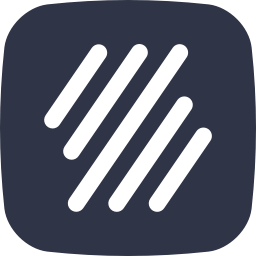Flat for Education music notation editor opens up a world where students can dive into music creation, enhancing their creative and musical skills. It offers them the autonomy to explore and create music independently, allowing them to learn in a way that suits them best, without constant oversight.
In this article, we'll offer specific advice on how you can help your students begin their journey with our music notation editor, enabling them to maximize its benefits. Additionally, we'll share some unique assignment ideas that leverage the music exercises available in your Resource Library to enrich the learning process.
Engaging Your Students Using Our Music Notation Editor
Flat for Education isn't just another tool – it's a gateway to a whole new world of musical exploration and creativity. Imagine enabling in your students the thrill of composing their own melodies, experimenting with harmonies, and transcribing their favorite songs with ease. With Flat for Education, these possibilities become a reality.
What sets our music notation editor apart is its versatility, letting your students explore different instruments, dive into various musical genres, and even collaborate with their classmates in real time.
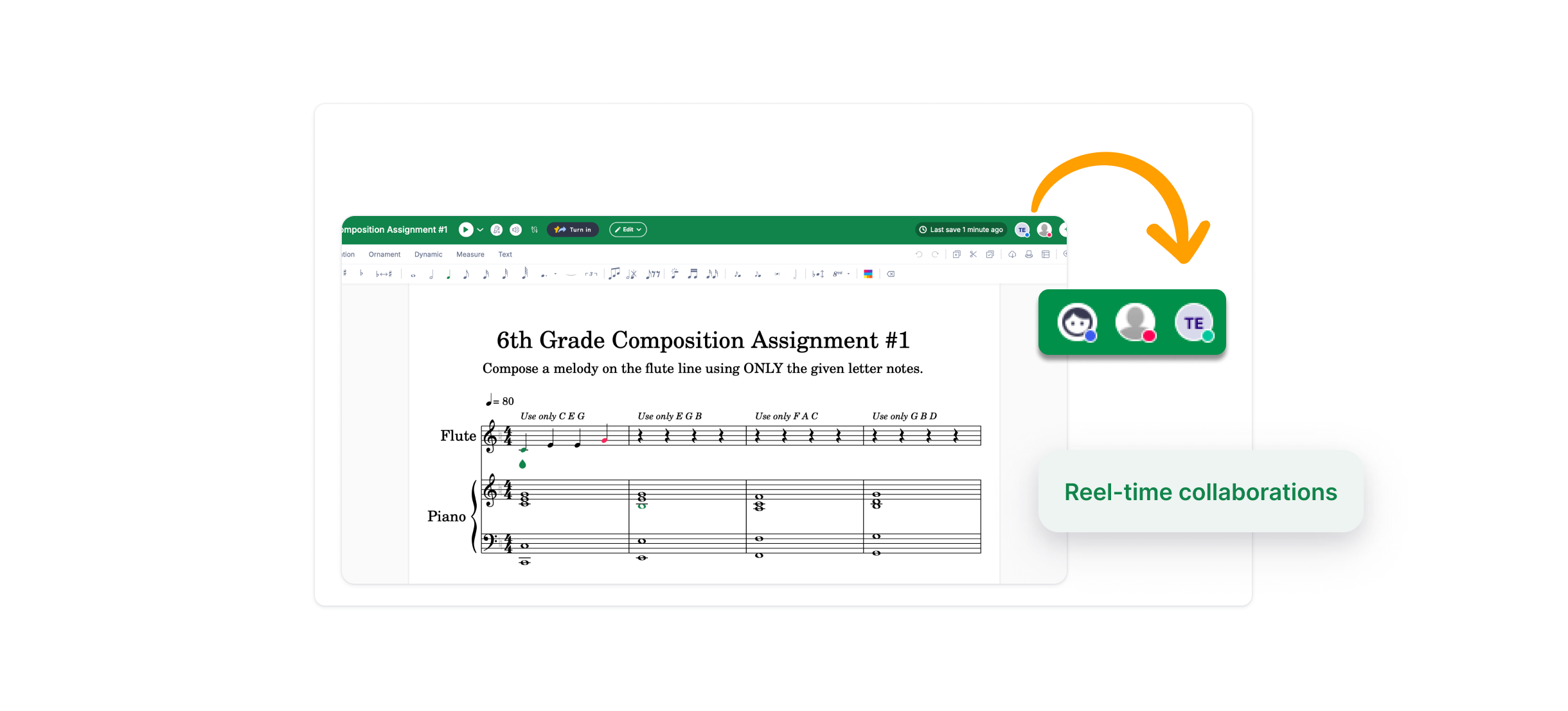
You might be amazed to discover that many students have a hidden passion for composing, which comes to life when they use Flat for Education's music notation editor, the ideal platform to spark their creativity. Once you've added your students to Flat for Education, you can assign them specific tasks or let them compose on their own!
💡 Learn how to add your students to your account in the guide below:
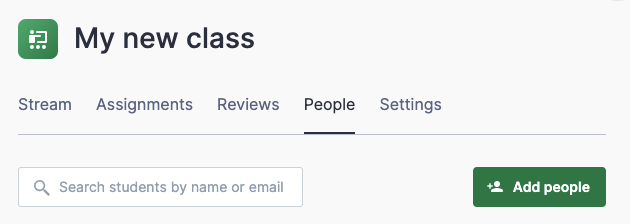
Ensuring Student Success with Our Music Notation Editor
Start by handing out this guide to your students. It's designed to ease them into the process, starting with straightforward instructions on setting up their accounts and submitting their assignments. These initial steps are laid out clearly to ensure they can begin without any confusion or delays.
Moving on, when they reach page 10, they'll find a comprehensive breakdown of the Editor's features. This section is crucial as it provides an in-depth look at the tools and functionalities they have at their disposal. It's tailored to help students grasp the essentials of music composition, enabling them to swiftly move from understanding the basics to creating their own scores. This guide is designed to enhance their confidence in using our music notation editor.
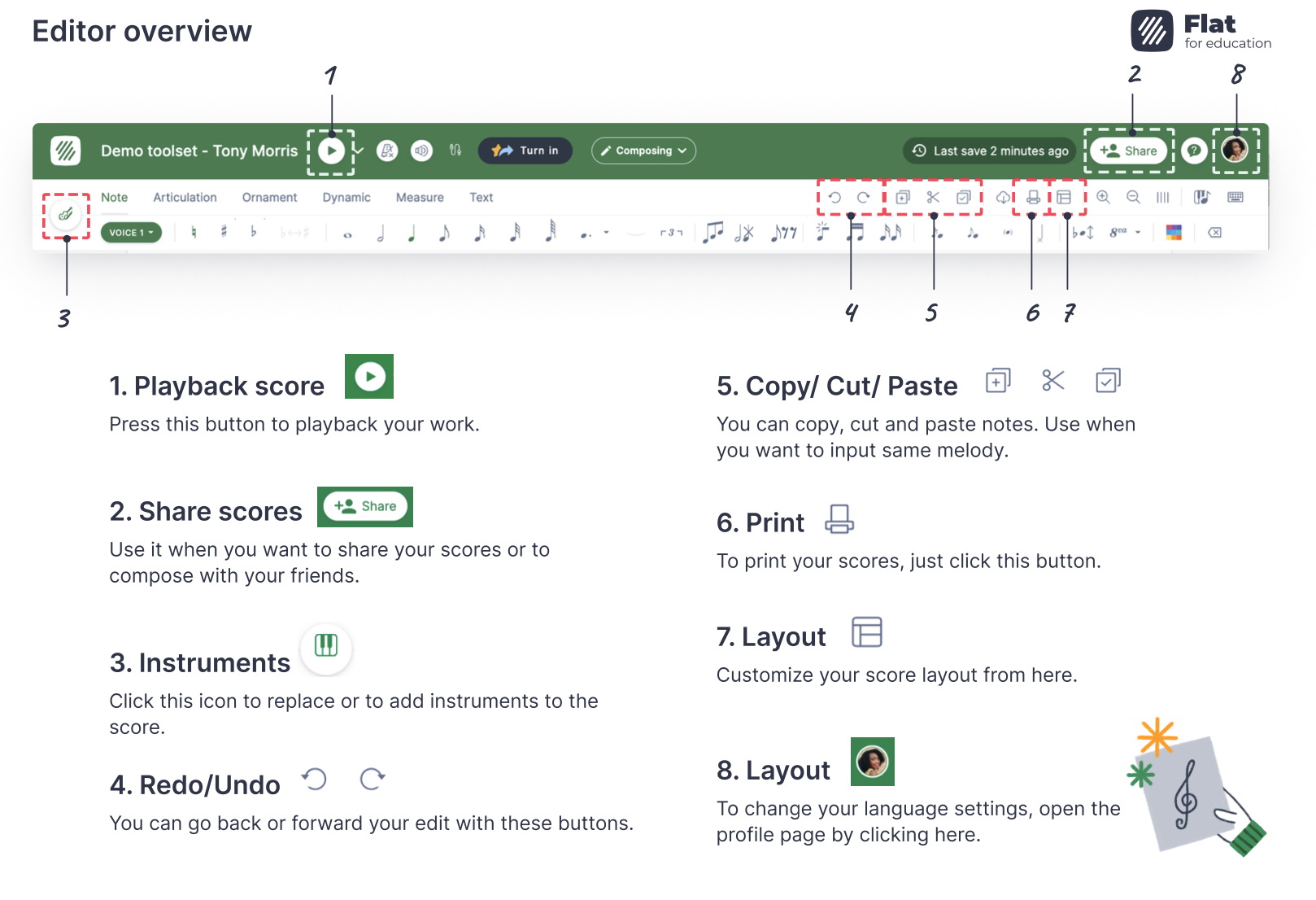
Encourage your students to use the music notation editor to experiment with their musical ideas and create their own compositions. Once they've completed their pieces, have them share their scores with you. Additionally, consider using these music compositions as a basis for extra credit assignments. If you're looking for ways to motivate your students and acknowledge their hard work, this can be an effective approach. It incentivizes their efforts while contributing to a more interactive and supportive classroom environment.
Now let's explore some of the assignments in the Resource Library that will motivate your students to learn more about music and create their own compositions.
In case you do not know, the Resource Library is the database for all your assignments, offering a more efficient assignment creation process. To read more about it, please check out our dedicated article below.
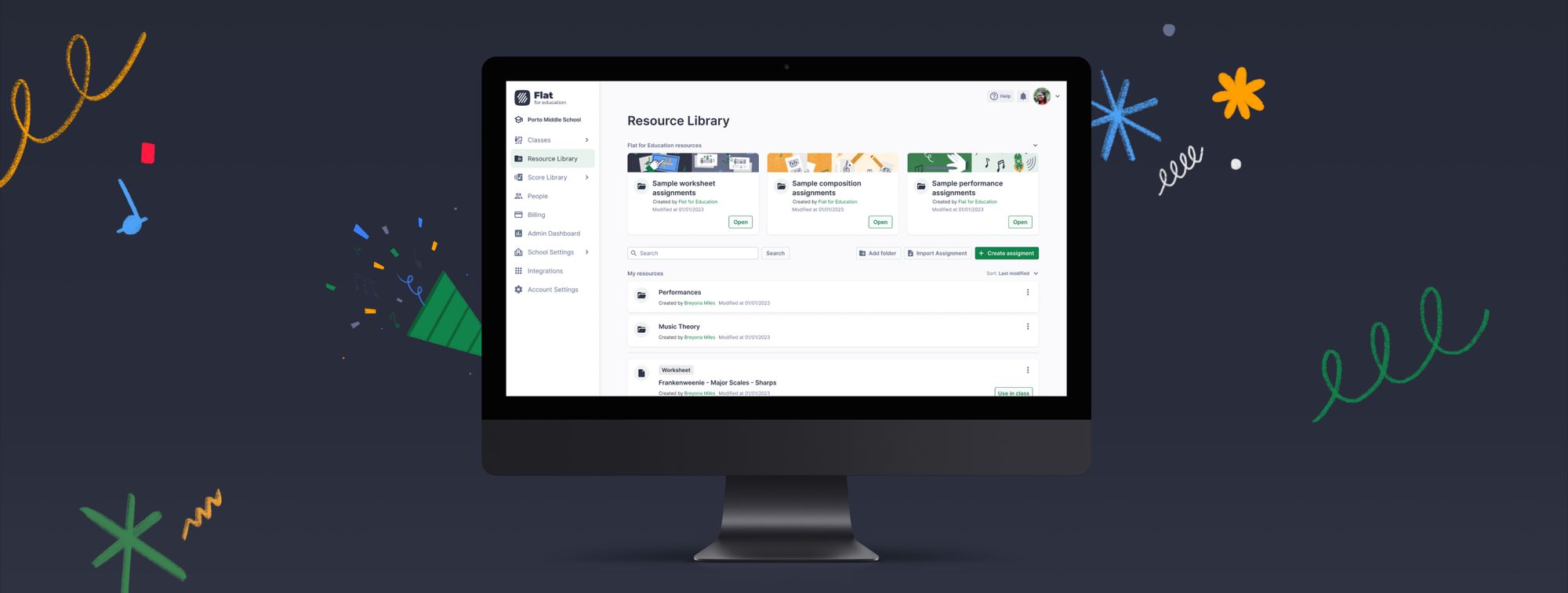
Assignments to Jumpstart Your Students' Musical Journeys
The independence that Flat for Education offers students is indeed empowering, allowing them to explore music notation at their own pace. However, the role of a teacher in guiding and inspiring students is irreplaceable. By assigning specific tasks, you can help your students apply their newfound skills in music and encourage deeper engagement with it.
For this, we have the Sample Resources, where you can find pre-made assignments you can adapt and assign to your students.

In the Resource Library, you'll find many engaging ideas, but let's highlight three assignment types that teachers find particularly effective. These tasks are meant to help students begin their adventure in music composition, sparking their creativity, enhancing their problem-solving skills, and building a stronger interest for music. They are just the start, introducing students to what they can achieve with our music notation editor.
- Worksheet - Note Naming (Treble Clef)
This exercise is all about getting students comfortable with identifying notes. It's a basic but crucial skill, much like learning the ABCs before you start reading and writing. It sets the foundation for understanding and interpreting music.
💡Learn more about the worksheet assignments below:
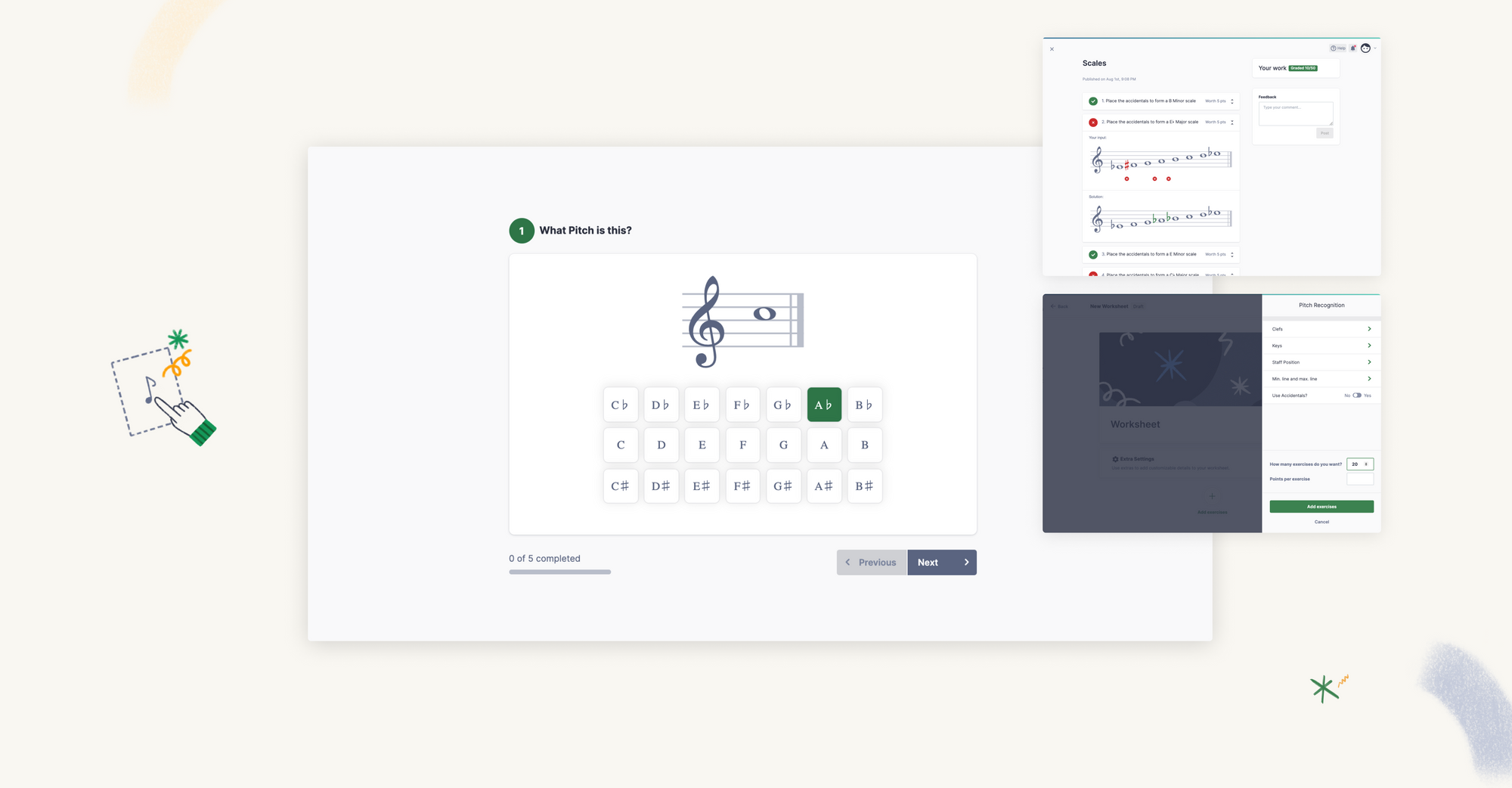
- Composing a new score
This assignment invites students to create their own music. It's a chance for them to experiment, come up with melodies, and maybe even try some complex tunes. It's about giving them a feel for what it's like to be a composer and encouraging them to express their musical ideas.
💡Learn more about the composition assignments below:
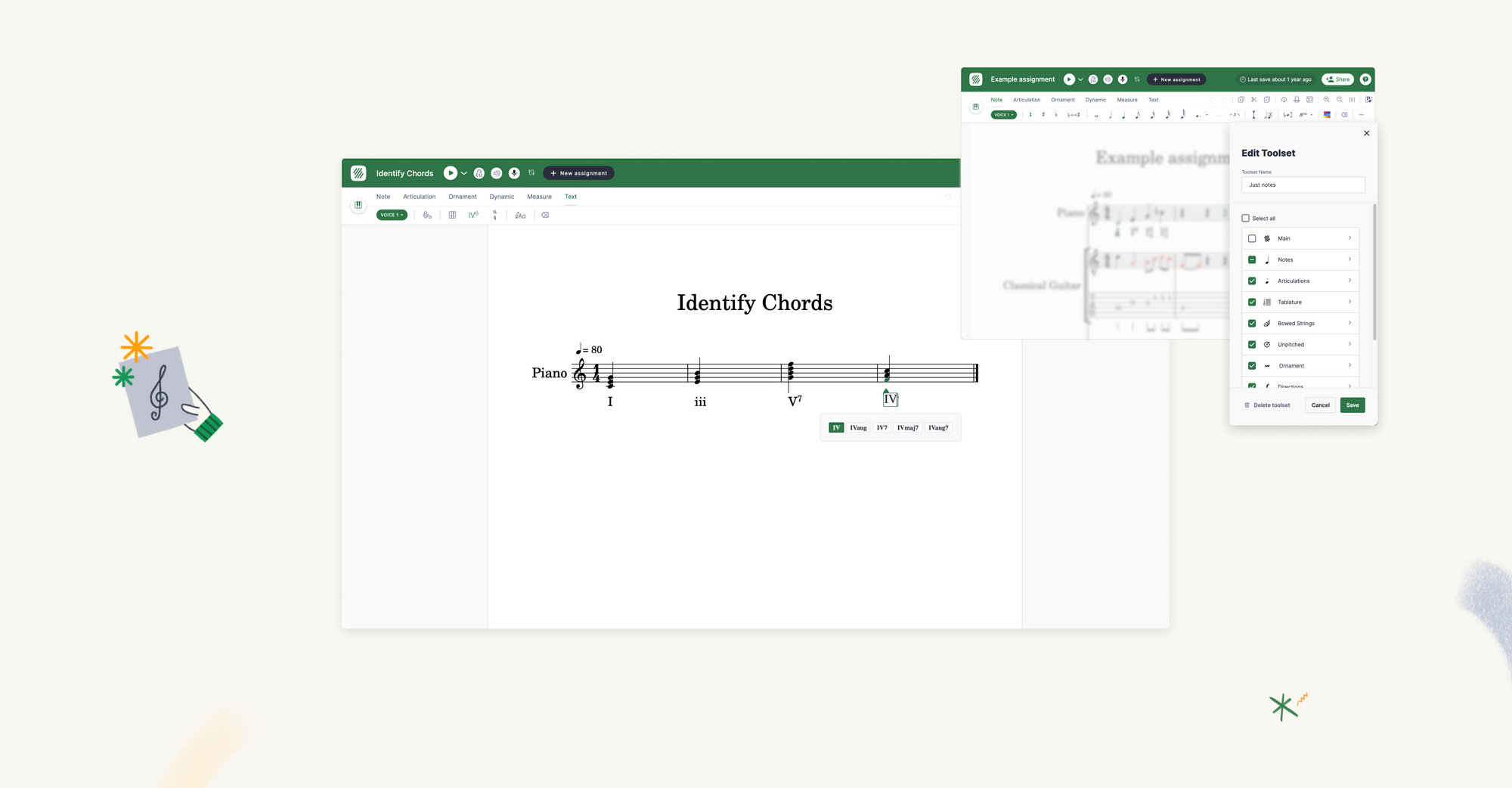
- Performance - Rhythm Reading
This task focuses on improving students' ability to read and perform rhythms. They'll work on recognizing different rhythmic patterns and showing what they've learned through playing music or singing. It's a hands-on way to apply what they're learning and improve their musical skills. Through exercises like these, students get to do more than just learn about music; they get to engage with it actively, making their learning experience more enjoyable.
💡Learn more about the performance assignments below:
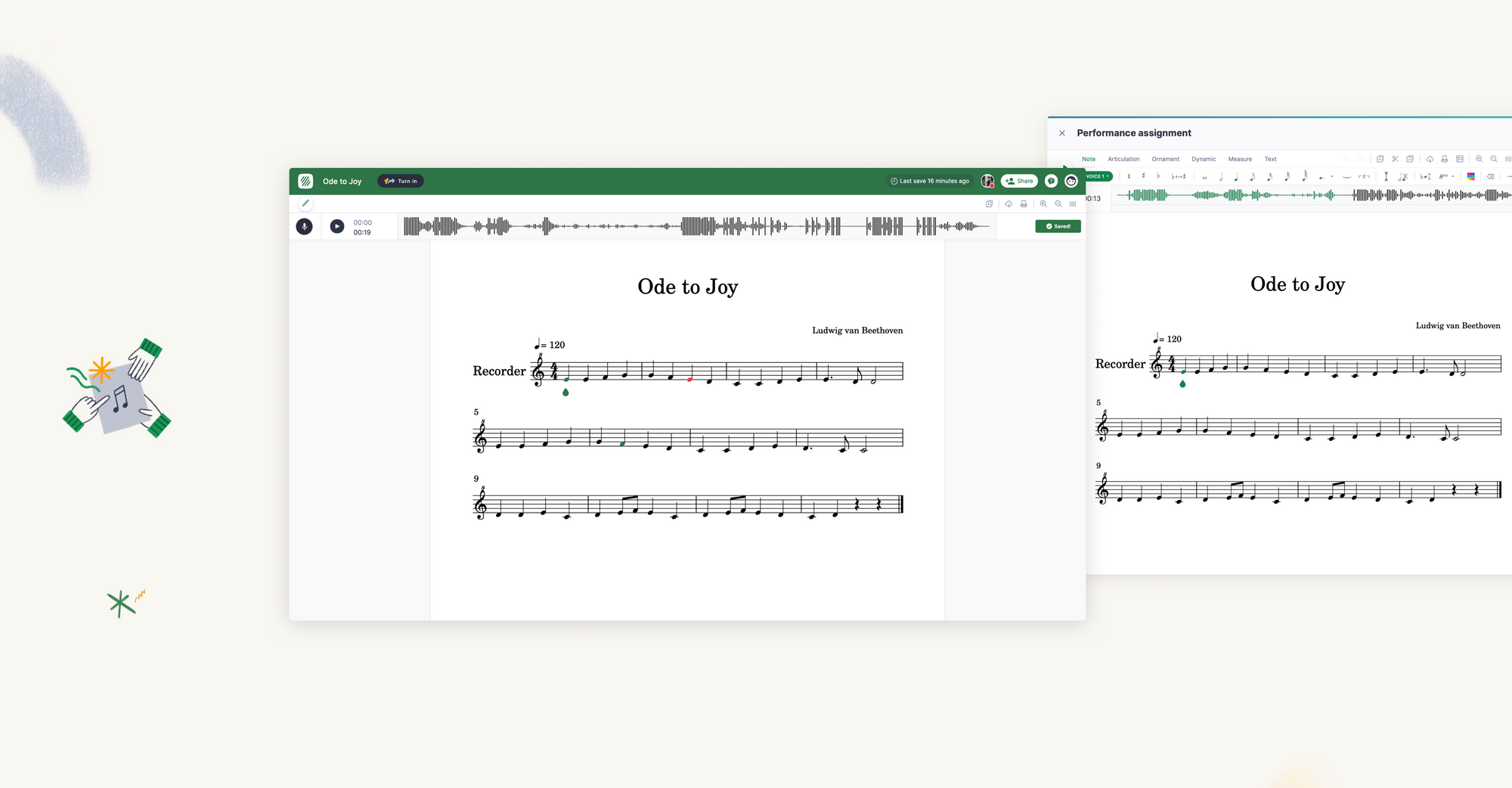
These 3 sample resources serve as a starting point for teachers who are integrating Flat for Education with their classroom activities.
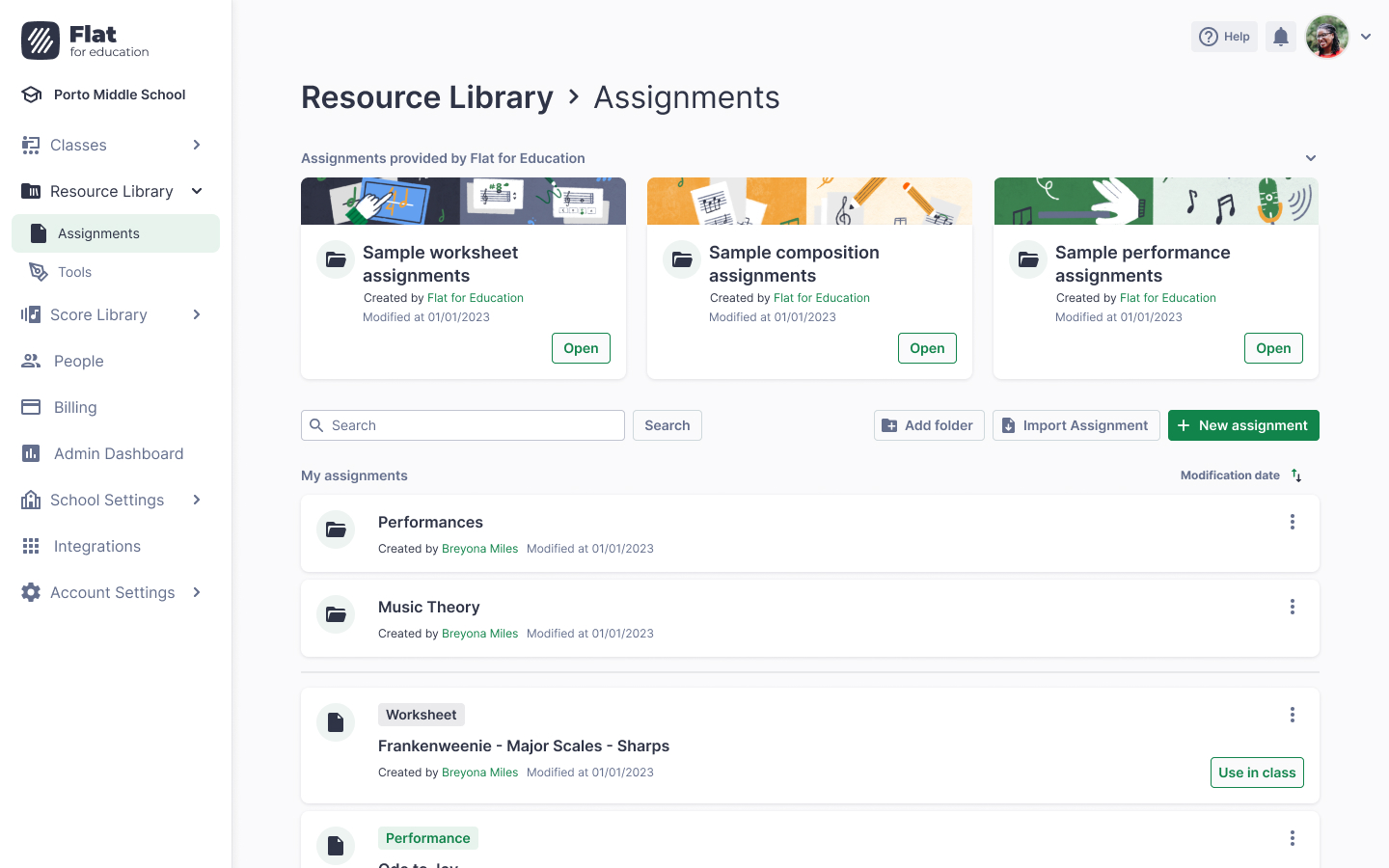
This is all for now. We hope these tips can spark ideas on how to provide students with opportunities to meaningfully engage with our music notation editor to foster their creativity and cultivate a lifelong love for music.
As always, we love to hear from you. Don't hesitate to share your stories, feedback, and requests at edu@flat.io.
Best,

